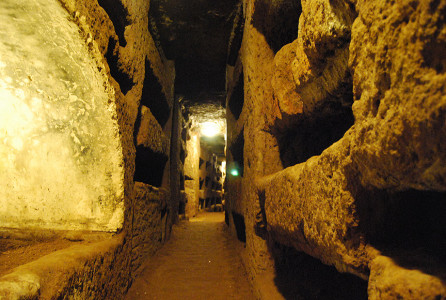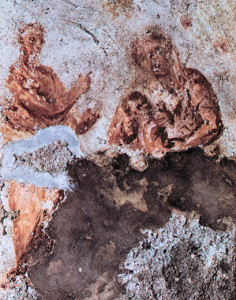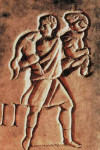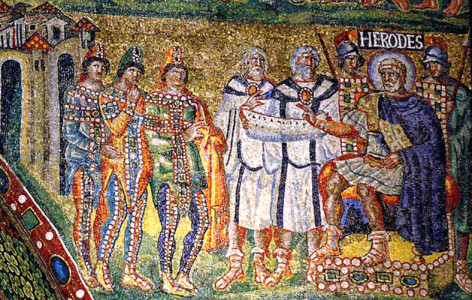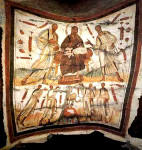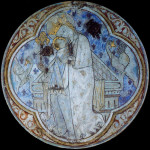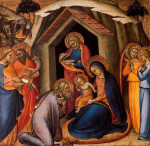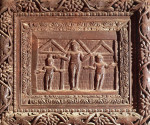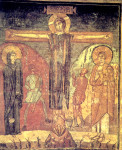My sister-in-law Wendy Francisco (who did the art for Yeshua’s Cat’s front cover) has insisted that I would find myself adding new pages to the Cat from time to time, and I have equally firmly replied that I never would. Well, Wendy won. Over the last two or three weeks that unmistakable nudge (much like a cat butting her head against your chest) has been growing more insistent.
And, Donna West, it was your kind comment on my post about the cat who inspired the book that pushed the nudge into actual words, drawing me out of the busy-ness of publishing concerns and back into Mari’s world.
So, I wish each of you a blessed Christmas, and as a gift from Mari to you, here are a few new words from her, never published before–perhaps for some later edition.
For those of you who have the paperback edition, this would be inserted at the top of page 124, just after “. . . filled with laughter.” For those of you with the Kindle edition, it’s in Chapter 15, Magdala, just after Mari muses about the nature of the festival of lights, and before Yeshua starts speaking on the last night of the feast.
* * *
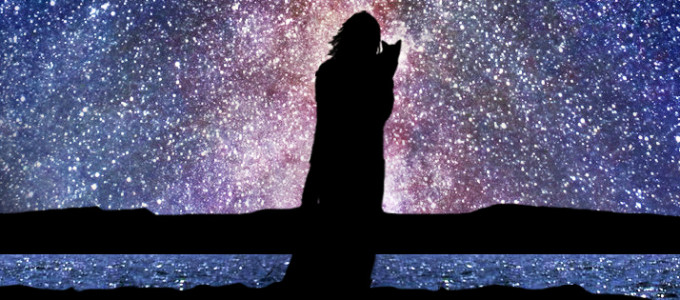
One night after everyone had gone to bed I finally asked him. “Are your people celebrating the return of the sun’s warmth when they celebrate their festival of lights, son of Earth?”
“Yes and no, little mother,” he replied, turning his head and smiling as he opened his eyes. “We measure the years by the seasons of the moon, not by the sun’s path, so none of our holy days takes note of the sun’s movement, not even this one. No, this week we rejoice in events almost 200 years past, when a great man named Judas Maccabeus cleansed the Temple in Jerusalem from the pollution of a pagan altar put there by foreign conquerors. Our many lamps call us to remember that the One’s light can dispel even the deepest darkness.”
He rose to his feet and reached out his arm in invitation, so I leapt to his shoulder, wrapping my tail around his neck. Together we walked out under the winter sky and stood on the hill, watching the stars touch the great sea with their cold fire.
“Yet, little leopard,” he continued as if he had never paused, “you are right when you wonder if we are also welcoming the sun’s return. Just as stars grow brighter in the long nights, each light that burns in winter’s darkness whispers of that hope. Together with all Earth’s children, our hearts grow full when we see the sun begin its long journey back to the heights of heaven. This too reminds us of the One’s faithfulness.”
I curled around his neck more closely to dispel the night’s chill, but I said nothing. I only purred with pleasure at his closeness. I sensed that words still lay unspoken in his heart.
“Sweet Mari, my mother told me that I was born on a night like this, when the stars danced in a black sky, and the breath of humans and beasts alike clouded vision with their brief mist. Joy filled the night and sang in the heavens at the wonder of my coming into the world. All things were made new under that sky, she said.”
I rubbed my whiskers against his cheek, and he continued.
“I can almost hear the heavens singing on such nights. The One’s face shimmers behind the host of stars like a distant oasis in the heat of a desert’s summer day. And yet the chill of a winter night and the searing heat of the desert’s noon both lie quiet in the hollow of his hand.
“As do you and I.”
.
.


